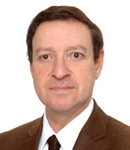
Word from the President

For the past 40 years I have been involved in nuclear sciences and promoting the wide variety of uses they have for society. I started at Cornell University, in the US, as a PhD student studying plasma physics (inertial confinement fusion), and completed my doctoral thesis in France, at Orsay University. I went on to work for the CEA and discovered scientific applications used first in the area of defense and later the nuclear fuel cycle. I worked both in the front end (laser isotope separation) and the back end (reprocessing and nuclear waste conditioning) of the cycle, where I directed the completion and commissioning of the Atalante research facility at CEA/Marcoule. Atalante is due to receive this year a prestigious distinction, the nuclear ‘historical landmark award’ presented by our sister scientific society, the American Nuclear Society (ANS).
After a number of years at the CEA I joined the French utility Electricité de France in 2007 as Special Advisor for Nuclear R&D and International Issues. Among my responsibilities was the chairing of two European technical groups: The Risks Group of the European Nuclear Energy Forum (ENEF), since September 2012, and the European Sustainable Nuclear Industrial Initiative (ESNII) Task Force of the Sustainable Nuclear Energy Technology Platform (SNETP), since November 2010.

|
Whatever one’s track record is, it is a great honour to hold a prestigious position in one’s own country and then be elected President of the European Nuclear Society (ENS), which brings together and represents the interests of 23 scientific societies from the Member States and beyond. I would like to thank my predecessor as President of ENS, Marco Streit, and his predecessors since the foundation of ENS in 1975 for their vision, dedication and the painstaking efforts on behalf of the Society’s members. They have contributed to the establishment of a European organization that has a broad range of expertise in the field of nuclear science and engineering.
|
The first thing that strikes me is the diversity of our members, something that accurately reflects the diverse applications of nuclear energy and science across Europe. Allow me to choose the most extreme example of this diversity: What common ground is there between the Austrian Nuclear Society - situated a country with no nuclear reactors but which is home to the International Atomic Energy Agency and quality nuclear measurement labs - and the French Nuclear Society, which represents a country where 75% of the electricity generated comes from nuclear, operates 58 reactors with a closed fuel cycle and is launching nuclear projects not only in France, but also in the United Kingdom and China? Diversity indeed!
But whatever differences there may be due to culture, history (think for instance of central Europe), size and above all social acceptance of nuclear energy, we all share the same common values. The most remarkable of these is the conviction that nuclear science is of fundamental importance to Europe for at least two reasons:
Firstly, because the R&D work carried out is of a very high quality. As Chairman of ESNII I have discovered that there are many highly qualified research teams working all around Europe that have great scientific and engineering capability. They work either in Government laboratories or in industrial R &D centers, and nowadays they have greater difficulty in obtaining the necessary financial resources than they did twenty years ago.
Secondly, nuclear science is very important because it is the key to the future development of fission as an industrial energy source in Europe and globally. Europe should be fully aware of and exploit the considerable scientific assets it has at its disposal if it is to compete internationally with Asia.
It is vital to promote these shared values in a diversified Europe where the post-Fukushima political choices will divide countries between those who wish to continue using nuclear energy and those who want to stop doing so. This is a tall order. It will require great effort. There are crucial debates that should be further promoted and many meetings that must take place to spotlight the great contribution of nuclear science. This will help accelerate the pace of development. But even in the countries that have already stopped exploiting nuclear energy, or will do so, nuclear sciences and associated engineering activities will remain crucially important. Think about decommissioning, waste packaging or radiation effect studies using bio-molecular chemistry and genetics - to name but a few. Our task will be to bridge the gap between the ‘haves’ and the ‘have nots’, to maintain that rich diversity and to move forward together.
Noel Camarcat, newly-elected President of the European Nuclear Society
|

